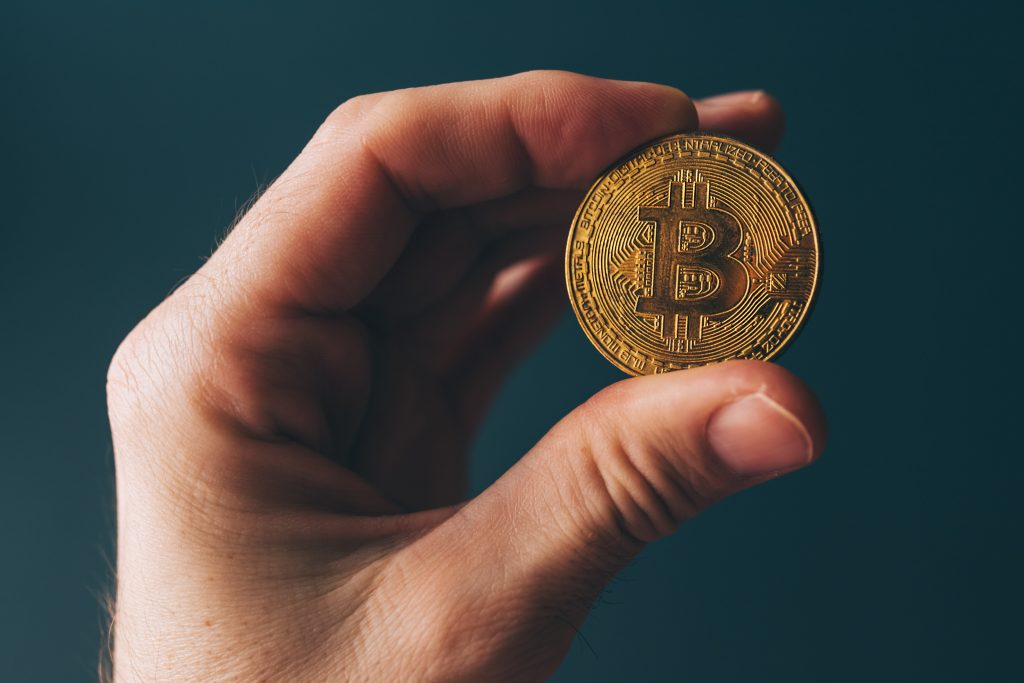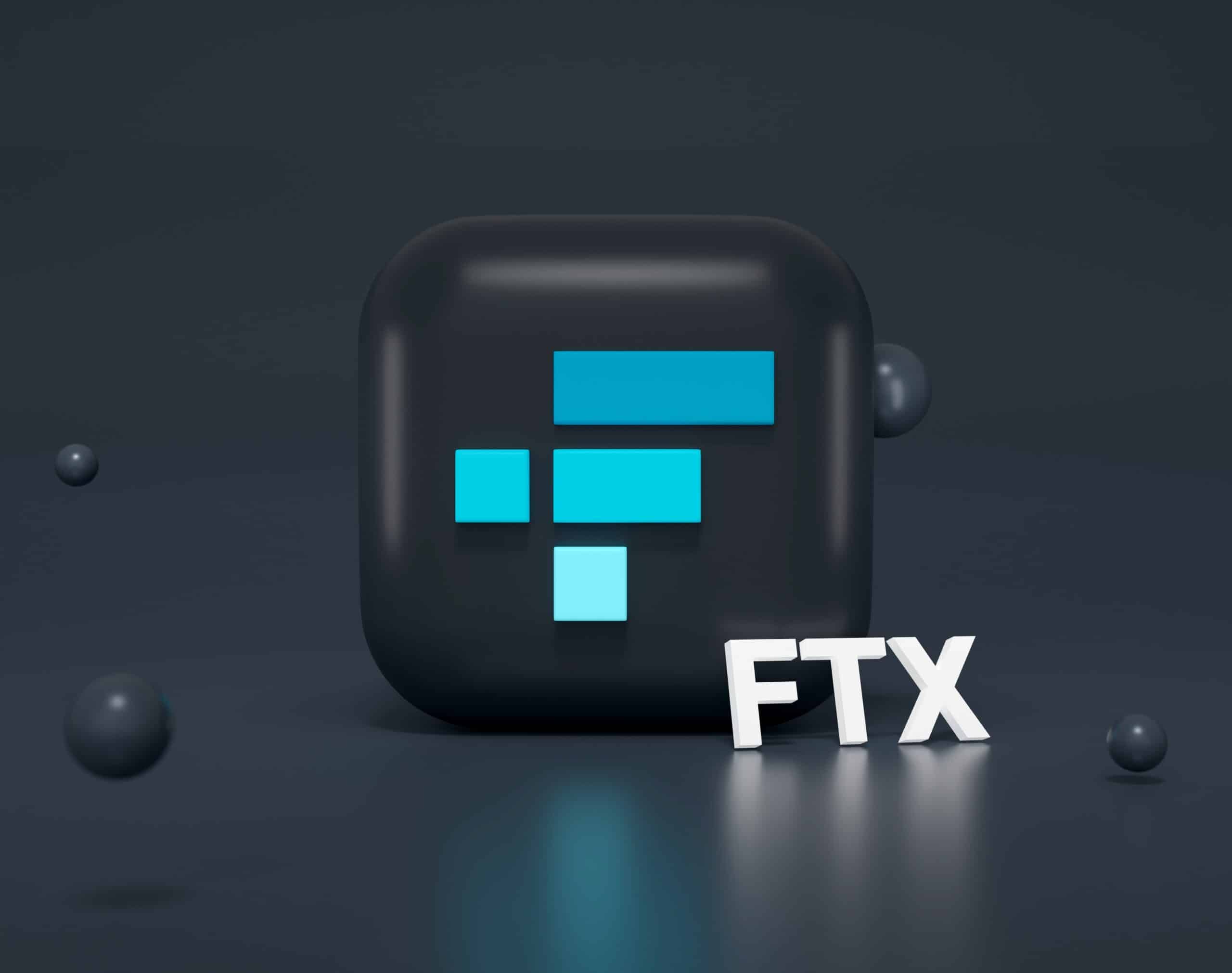Introduction
If you are a newcomer to the world of blockchain technology, and cryptocurrency or even a seasoned veteran, the numerous acronyms can be confusing.
The fact that blockchain technology itself is in its infancy, means that many more, new terms and different products will enter the market.
With this in mind, here in GuerrillaBuzz decided to write this guide and help blockchain enthusiasts and investors like you, to understand all of the latest buzz going around the industry.
What is an STO?
To understand what a STO is, firstly, we must look at what a security is.
In terms of finance, a security is a certification or some other financial instrument, that has an intrinsic monetary value. These securities can then either be traded by exchanges, who will broker the transaction or, they can be traded directly from peer-to-peer. These securities are then broken down into two subcategories, equity, and debt securities. This is in effect, owning part of a company, without actually taking it into your possession.
Companies use these methods so that they can raise capital from investors, to fund other parts of the business, such as expansion plans. In return for their investment, the financiers are normally offered to make their money back, and make a profit through means such as: dividends, interest rates or a share on the company profits.
Security Tokens are in essence, cryptographic tokens that can pay the owner dividends, entitle them to a share of profits, pay them interest, or, they can be used to reinvest into other Security Tokens.
There is a prerequisite to qualify a crypto token as a Security Token. As a requirement, the token must pass the Howey Test, which was set out in the case of SEC vs Howey (1946) in the United States.
This means that if the token aligns with the following rules, it will be considered a security token:
- It involves an investment of money.
- The investment is in a common enterprise, where there is more than one investor.
- There is an expectation of turning a profit from the works of either a third party or the promoter of the token.
Security Tokens generally garner their market value from an outside asset that is tradable. Because these class as securities, regulations apply to them and a breach in regulations will leave the offeror exposed to potential liability.
If marketed effectively, with a platform that can help advertise your business through an STO, it can be a very powerful and effective tool in raising capital. It is also widely believed that STOs will eventually outgrow traditional ICOs due to the fact that they offer more security for investors, due to the regulations in place.
Selling a Security Token is comparable to an ICO in the sense that coins are issued to the investors. However, whilst an ICO investor would seek to gain value through the unlocking of a platform, or the appreciation in value of the coin, an STO investor would seek to gain cash flow in future, potential dividends or any potential right to vote that comes with the security.
Security Tokens, as previously mentioned are backed by outside assets that give them an intrinsic monetary value as soon as they are issued. This is in contrast to the use of a regular, utility token, where the actual value is based on speculation until a platform is developed and marketed for it.
In essence, the model of using a security token makes the process of raising capital for your project, look less like a Kickstarter page and more like a professional stock that is for sale.
You can also create dedicated black and whitelists with an STO that assists with anti-money laundering and know-your-customer regulatory requirements. Through operating in the manner, an STO can cut out a lot of the stigma that has currently been generated by the usual “Wild West” approach to crowdfunding. An example of some of these are, a lack of corporate responsibility, the potential for fraud and having no way of getting anything back if the company fails.
These positives surrounding STOs seem likely to generate a massive increase, in the amount of capital invested in the blockchain industry.
Finally, there are numerous different types of token, that confer different rights and rewards to the purchaser. Let’s explore these for a moment:
Right:
By acquiring a certain token, the holder will then be granted certain rights within the platform of that token. For example, by owning DAO Coins, you could have obtained voting rights within DAO. This would have allowed you to have a say in which projects receive funding and which do not.

Value Exchange:
Tokens, in effect, create a value and monetary system within its own platform. These tokens allow buyers and sellers to trade with a real value within the confines of the platform. This can help to govern rewards when certain tasks have been completed. The ability to create and maintain value within the system is a key role of tokens.

Fees: Tokens can act as a method of entry, to be allowed to use particular functionalities within the system itself.

Function: A token doing this can allow an owner to enhance the experience of people who use that particular system. An example of this would be allowing a token holder to host advertisements within the system.

Currency: Tokens can be used as a form of currency for exchanges both inside and outside of the platform, dependent on their value at the time.

Earnings: A token with this characteristic would assist in the fair division of any profits or any other fiscal benefits that may apply to investors and token holders.

The more of these functions that a token fulfills, the higher the potential value of the token itself.
Now that we know a lot about Security Tokens, we can explore them further and we can explore why and when your business should consider an STO.
When should my Business Consider an STO?

There may be a point when you are considering marketing your company through an STO. You might be thinking about it right now?
There are some key points to consider so that you can make sure you get good value for your STO.
Your company should only consider using an STO, if you are looking to generate a lot of capital and your company aligns with four of the following seven descriptions.
Currently turning over more than $10 Million annually: This is because, to run a successful funding round by using an STO, your business needs to generate the best valuation possible. The higher the turnover and profits of your business, the higher your company valuation will be. This will increase the amount of capital you can get for the percentages of your business.
Operating a global business: This is because, to maximize the potential of your STO, you must be able to market to a global audience, rather than being limited to being regional. This will help you to raise a lot more capital, a lot quicker.
You should be interested in a funding method that connects with your current base of customers. If you wish to issue an asset that is readily transferable, then it would be wise to consider using an STO, as these can be transferred relatively easily. You should also be a high growth company if you want to maximize the positive effects of carrying out an STO.
Furthermore, you should be willing to take a slight risk, in the sense that the regulatory position surrounding STOs can change in different places, at any time. This could potentially place your source of investment at risk. Especially, if countries with more spending power such as The United States, The United Kingdom, Germany, Russia, and South Korea, tighten their own regulations. This carries the risk of massive losses of the business. Thankfully, the risks of this happening seem to be very slight, therefore everything should be okay.
Finally, you should be desiring greater liquidity in the assets of your stakeholders. This is because, as opposed to ICOs, which do not offer that much in this sense, STOs are an incredibly liquid investment.
If your company fits in with the majority of these descriptions, then your company would be incredibly likely to gain a lot of capital and support from your fundraising efforts.
However, if your company falls short of these points, it may be worth not jumping in at the deep end. This is because a failed attempt at launching using an STO, could have dire financial implications for your business. Especially, if the amount of capital raised, is lower than the amount of money used to set up the offering.
If you are still set on using an STO, then it would be worth waiting until your business is at a point where it aligns with these descriptions a bit more closely. It will also give you more time to plan your offering.
What is the Difference Between an STO an ICO?

Whilst STOs and Initial Coin Offerings (ICOs) are similar, in the sense that they are both used by companies to generate capital for their projects, in most other aspects, they are very different.
Firstly, due to the fact that Security Tokens are considered securities, whereas ICOs aren’t, people who invest using an STO are further protected by securities legislation. This helps to prevent fraud or to provide the investor with a type of recourse if the company they have invested in goes bankrupt. Because of this, generally speaking, STOs are currently being considered as a potentially safer purchase for investors.
Furthermore, there is a difference in the way STOs and ICOs are backed. STOs, as securities are backed by real assets that have an intrinsic, monetary value. ICOs, on the other hand, do not have their value fixed by any tangible assets and therefore do not have an intrinsic monetary value.
Also, ICOs generate their value through the technology of its platform, and the appreciation of the coins themselves, whereas STOs create their value through the operations and the climate of the business itself. Because of this, for an STO to be valuable, your company would need to be run in an efficient manner; similar to that of a publicly traded company. This, is in contrast to an ICO for your business, which would not devalue as your coins as severely due to negative events hitting your company.
Due to the fact that STOs are securities and therefore bound by securities regulations internationally, their legal situation has to be considered a lot more clearly than it would for a traditional ICO. This would involve bringing in legal experts, who can help to steer your business in the right direction when launching an STO. Whilst, you would still potentially need legal advice for an ICO, the hours of work that your lawyer would have to put in, is a lot higher for an STO, due to their regulated nature. This would involve increased costs to your business.
Due to the regulations surrounding securities, Security Tokens would be slightly more limited, in regard to the breadth of their target market. This is because, due to the unregulated nature of ICOs, there is no restriction on who can invest. Someone with $10, could invest in an ICO from anywhere in the world. This is in contrast to STOs, which, have to comply with anti-money laundering and know-your-client regulations. These regulations place certain barriers in the way of certain investors, depending on the securities legislation in their country. On the flip side, this can be seen as a good thing, due to the fact that it means that generally, STO investors would be more reputable.
An example of this is that in the United States, investors have to be accredited before they can actually make any deals of this nature. This provides a barrier to people that may have less capital however, it also helps to ensure that investments are coming from legitimate sources.
In essence, STOs are more similar to floating on the stock market, than they are to ICOs.
The Positives of STOs
Obviously, there are many positives to using a STO. People wouldn’t be clamoring and falling over themselves to find out more about it if there weren’t any. However, the benefits are actually substantial.
Firstly, it is incredibly easy in comparison, for a business to market themselves to the public using an STO, as opposed to entering into the public through the more conventional means of floating on their country’s stock market or an Alternative Investment Market. This is because it is considerably cheaper, as an individual wanting to invest will not necessarily have to pay broker’s fees, exchange fees and the costs associated with extensive due diligence processes. Also, this process can take a considerable amount of time to finalize, making it even more arduous.
In contrast to this, an STO can be used to place a value on an asset so that it can then be quickly traded on an online platform. This helps younger, smaller businesses to rapidly gain substantial amounts of capital, without the high costs eating away at the profits from the offering.
These reasons make it easier for smaller businesses, with less spending power to market themselves and attract public investment.
As the legal situation surrounding blockchain technology becomes less of a mystery and the facilities to create tokens become more accessible, the costs of running an STO will decrease significantly as time goes on. This will make it feasible accessible to businesses that are even smaller and will help to foster in the rapid development surrounding blockchain through this new wave of investment.
An STO can also provide greater flexibility to business owners looking to gain investment. This is because when a person wants to publicly list their company, there are rigorous background checks and even more ongoing compliance exercises. As well as this, some businesses become trapped in a pattern of looking at the business in a short circular context. This is because you will be going by the recommendation of analysts to take certain actions to maximize your stock. Without this pressure, you may find your long-term vision to be clearer and you can make changes to your business more freely.
STOs, are also a great way to attract investors from all around the globe. This is because the standards required of an STO are fairly regular across different regions. Security Tokens also tend to be a much more liquid investment, in comparison to private company shares which can be cumbersome and expensive to trade.
This means that STOs, generally, are of interest to a different type of investor, in comparison to the stock market or Alternative Investment Market. Generally, contributions through STOs are from global investors who are wanting to create a good return that has a much higher level of liquidity. This helps to raise large sums of money very quickly and can effectively market your business to many different parts of the world.
STOs are also good, in the sense that they can allow you to divide any of your underlying assets into smaller assets. This acts as a facilitator for fractional ownership. Fractional ownership can help to make your offering more affordable to investors, it can also make your tokens easier to transfer on a secondary market.
Finally, matters of compliance with STOs are a little more complicated than they would be with ICOs however, compliance can be designed into an STO using new standards that have been introduced by certain blockchains, an example of this would be Ethereum. An example of this is a measure can be inserted when making the STO whereby only trusted investors can buy or sell them.
The Negatives of STOs
Like anything, there are some negatives to using STOs. The following are some key cons to consider when you are thinking about using an STO.
Firstly, securities in the traditional sense have brokerages and various other outlets, all over the world which can trade for you, or create security tokens for you. Whereas, with an STO, you have to create your own Security Tokens to trade, in addition to creating your own platform for them to be traded on. If this isn’t managed correctly, you could end up losing a lot of money, or worse, you could end up in legal trouble with securities regulations.
Creating one of these platforms can be incredibly complex, which means you may have to bring in an external expert to create and manage it for you. This will incur a cost however, the decreased risk of financial or regulatory complications, is definitely worth both the start-up and maintenance costs.
Furthermore, the world of STOs is a very new concept, with the first only being completed in the last couple of years. Therefore, nothing has been set in stone in terms of compliance and regulations, this makes using an STO slightly riskier for investors and your business.
There is a very limited legal precedent in regard to STOs and regulators could move in a different direction at any point, so if new regulations were brought in, the liquidity of your token and the stability of your STO may be put at risk.
Real Examples of STOs and What we can Learn?
There are already a few examples of STOs, and a lot can be learned from these early offerings.
For example, according to ccn.com, former SpaceX engineer, Joshua Greenwald’s crypto exchange, LXDX will be among one of the first companies to issue their stock using an STO.
In the circumstances of LXDX itself, these Security Tokens will give the purchaser direct ownership within the exchange. Reportedly, five-million tokens are going to be issued by LXDX, which would give the owners the right to a collective 10% of their quarterly adjusted gross revenue. These tokens were issued at one Euro per token, which brought LXDX to a $57 Million valuation for this financing round. The current COO and co-founder of the crypto exchange, Will Roman has commented that this would be the only round of funding used through STO for the foreseeable future.
This STO itself, is being marketed to the public in Malta, which has a more lenient stance surrounding cryptocurrency and blockchain technology. Although, investors will still have to abide by their own, local securities legislation.
LXDX themselves, are keen to cast off the stigma surrounding the blockchain industry, where some estimates have claimed that in 2017, over 70% of ICOs were in fact, scams. They are claiming to do this by operating with a policy of ‘radical transparency’, in an effort to avoid any potential for dubious practices being carried out.
Furthermore, LXDX has announced that they will not enact the practice of automatic liquidation. Automatic liquidation is the process in which a company will take back profits from successful traders to help the platform with paying for losses that they cannot pay off themselves.
What we can learn from this early STO is that, by offering shares through an STO, you can display to investors that you are committed to looking after their investment. The heavily regulated securities market, combined with the fact that LXDX have claimed, they will not be carrying out automatic liquidation, they are showing to the market, that they are different. This shows that a blockchain platform, seeking to gain capital, can be a perfectly legitimate and safe enterprise.
Furthermore, it has displayed that businesses do believe that STOs are a viable and effective way of gaining capital to finance their projects. This is evidenced by the fact that LXDX, with a $57 Million valuation, has managed to market 5 Million tokens, at one euro each. This means they are offering out 5 Million Euros in tokens. That is no small achievement.
Another good example of a platform facilitating STOs would be Polymath Network. Polymath uses a system, that brings securities to its blockchain platform. As previously discussed, Polymath will create tokens, that are backed by real assets with monetary value.
They have also claimed that their system, has a safeguard, meaning that only accredited investors, that pass local legislative requirements, may invest.
Having received thousands of applications, the company decided to initially go for five different projects to offer tokens to. These were 7Pass, which offers the cannabis industry funding services, MintHealth, which is a blockchain health company, a blockchain real estate company called BlockEstate, a blockchain system for financing called Corl and a patent platform based from blockchain called IPwe.
Polymath have also been working to try and help set a standard for this space, hiring external experts. These standards will be made accessible to other people within the STO space, such as investors and issuers.
What we can learn from this project, is that there is a massive drive by companies, that are wanting to market themselves to the public by using an STO. This is evidenced by the thousands and thousands of initial applications that Polymath received for its launch.
Furthermore, the lengths that Polymath are going to, to ensure that STOs are accessible and have clear standards of best practice, help to increase the speed in which STOs can grow. This is because, when clear standards of best practice are defined, and more people have access to STOs, a multitude of new wave investors will appear. This is because investors will have more confidence in the fact that their investment will be going to a legitimate business and the financial barriers to investing in STOs, will decrease due to the simplification of their legal status over time.
How Can STO help the Blockchain Eco-system Keep Growing?
There is a firm belief that STOs will play a pivotal role in helping the blockchain ecosystem to continue its rapid growth, as a behemoth of an industry.
One of the reasons that STOs can help with the growth of the blockchain eco-system is that because the actual Security Tokens are backed by real assets, they provide assurance to the people who invest. This assurance is provided in the fact that the Security Tokens would be regulated by their respective countries, this means the likelihood of someone being defrauded out of their money, decreases. This will lead to a safer blockchain market for investors.
If the blockchain market shifted towards STOs, even cautious investors who are dubious about the legitimacy of some blockchain projects would be a lot more likely to take the risk, knowing that if anything goes wrong, the law is on their side.
The number of people investing in blockchain projects would then increase dramatically. This increased investment in the sector would allow for rapid expansion and the faster development of new blockchain technologies.
Eventually, the legitimacy of security regulations could serve to be the thing that sends blockchain technology into the stratosphere.
Conclusion
In conclusion, an STO is a very secure and safe way for both investors, and people who wish to raise funds for their project. The added security has worked to increase the credibility of blockchain technology companies, in a time where much of the industry is mired in controversy and there is a belief that there are more sharks than serious players.
However, due to the infancy of STOs, it is definitely worth referring to experts for both the marketing and compliance aspects of your STO, that is until regulation in the blockchain industry becomes clearer and more concise.
If you have any questions, please send us a private message, and a member of our dedicated team will be on hand to help you with your query.
About the Author

Yuval is a savvy SEO and marketing expert with over a decade of experience. Specializing in the blockchain industry, he's the go-to guy for crypto companies looking to simplify their digital marketing strategies and achieve explosive growth. As a digital nomad and successful company builder, Yuval brings a fresh, creative perspective to every project he tackles.






